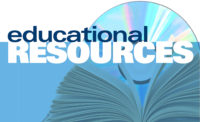Riding the waves of change (in the workplace)
A simple model helps teams adapt

Changes in the workplace could be described as rolling in like sets of waves off the coast. Organizations must be nimble and strong to ride the waves instead of being pulled under.
Change is so prevalent in the workplace that the Society for Industrial and Occupational Psychology (SIOP) ranked “adapting to change effectively” as #2 on its 2017 Top 10 Workplace Trends List.
In most organizations, teams of one type or another are the core work unit. Even work that was traditionally a solo effort, such as being a physician or writing a text book, is now most often performed by a team. So any tool that helps teams effectively adapt to change can be a valuable strategy for organizations facing those changes.
Working with faculty advisor Wendy Bedwell at the University of Southern Florida, graduate I-O psychology students Sarah Frick, Keaton Fletcher, and Philip Ramsay synthesized several influential theories of team adaptation to develop “The 4 R’s of Team Adaptation.”
The four steps include recognizing the change; reframing the team’s cognitive approach to a task based on the change; responding to the change by implementing the new approach; and reflecting on the change and how successfully the team adapted.
This model can help diverse organizations effectively adapt to change. One example Frick cited is a medical team.
“If something changes in the context of a procedure, possibly the patient’s status or the composition of the work team, then the team would need to adapt,” she explained.
Another application of the model would be for a team working on a client project. If the client updates their objectives or the project information, the team needs to adapt to the change.
Changes can have internal or external sources, and Bedwell noted that the model can be applied reactively or proactively.
“If a team is having trouble because of a change, then they can say, Ok, let’s backtrack,” she explained. “What was the change event that happened? What do we need to do to address the situation? How are we going to reframe?’ Then, they can act and reflect on those actions, to help get them moving in the right direction.”
Teams working in any context can also be trained in the model to help them respond effectively by having contingency plans in place for anticipated changes. Frick said being aware of the different changes that could occur in the team’s environment can help them become more proactive.
“When you start a project or a task, think about the different things that can be altered and how those changes could affect what you’re doing,” she explained.
Pre-planning or gaming the situation in this way can help teams recognize changes as they occur and speed up response times.
Today’s work environment is fluid, changing rapidly and continuously. Bedwell and Frick say the 4 R’s model should be thought of as a continuous cycle. It’s important to go through all four parts of the cycle, Frick said,
“Without any one of these steps,” she added, “the whole process wouldn’t work.”
Making time for reflection is often a challenge, but Bedwell believes even the worst debrief is better than no debrief. She cited 2013 research by SIOP members Scott Tannenbaum and Christopher Cerasoli demonstrating a well-structured debrief comprised of both of taskwork and teamwork can lead to a 25% improvement in process and results.
In a typical business scenario, a debrief can have a positive effect on the bottom line. But in the context of a medical team, it can help avoid mistakes with more far reaching consequences.
“Medical doctors are the first to tell you, ‘Look I don’t have time to sit here and talk about what just happened,’” Bedwell said. “And we argue that if you take time, even just a couple minutes, to talk about what happened, you’ll help internalize the information and prevent the situation from happening again, which will save time, and potentially save lives, in the long run.”
Frick added, “The reflection process feeds into the ability to recognize change, and that’s why we view this as a cyclical process.”
As with any training initiative, team managers play a crucial role in successful use of the 4 R’s heuristic. “If they support it and believe in it, then it’s something that employees are likely going to want to do because they see that their managers value it,” said Bedwell. “If the manager says, ‘look this process is going to help us’, then the team is more likely to do it.”
Frick said budgeting time for reflection and debriefing is a key step managers can take. “A really important part of it is allowing time in the project timeline to have that debrief, to reflect and to realize, ‘here’s what we did well, and here’s what maybe we need to improve upon to move forward.’”
The 4 R’s heuristic itself is firmly rooted in collaboration. Not only does it draw on several influential studies of teamwork and training, but the framework was inspired by Eduardo Salas’s comments at a recent interdisciplinary conference for people studying teamwork.
“That’s something I absolutely love,” Bedwell said, “that it’s not only evidence-based and scientifically driven, but it was derived from us having conversations about research-- taking science and making it palpable to practitioners who can use it.”
Frick agreed, saying I-O psychologists have created a lot of helpful information for people working in teams that need to adapt to changing circumstances.
“We wanted to synthesize that information into a tool anyone could use.”
Connect
Click to connect with Wendy Bedwell or Sarah Frick on LinkedIn.
Looking for a reprint of this article?
From high-res PDFs to custom plaques, order your copy today!





